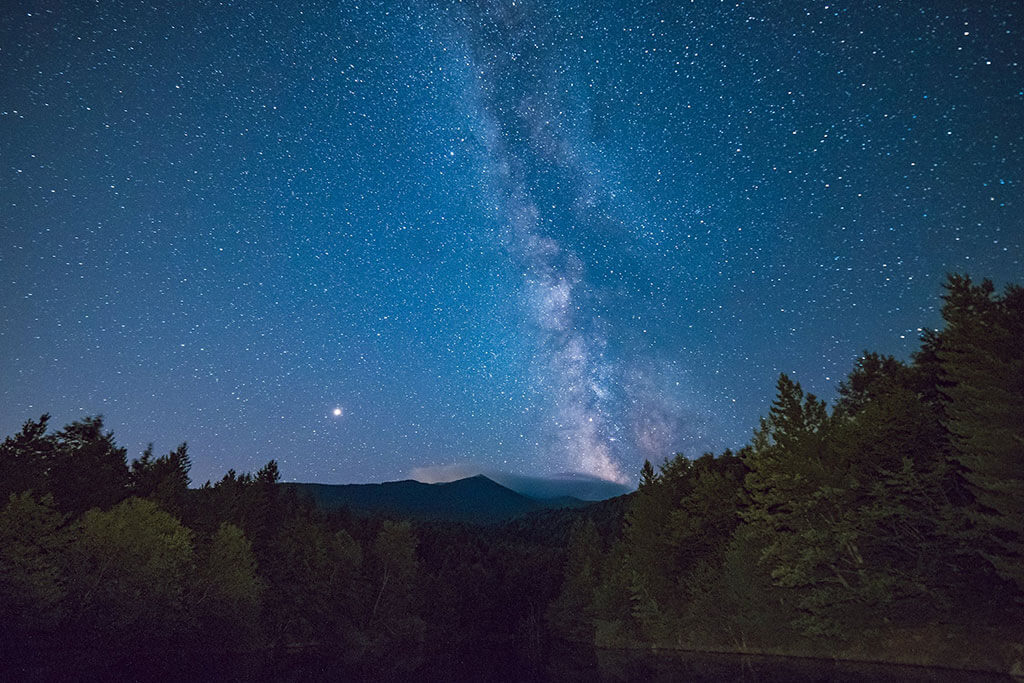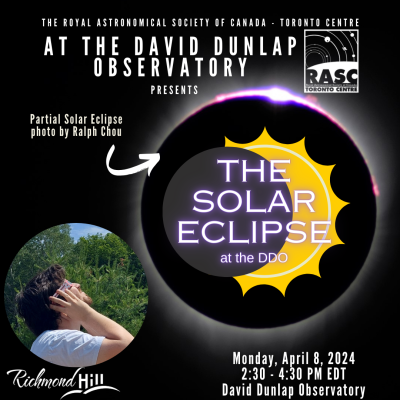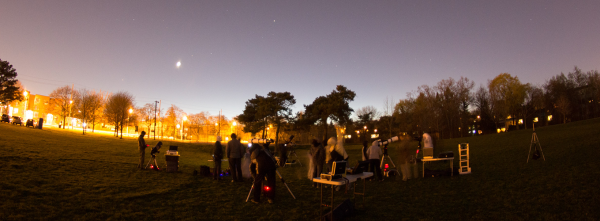
14
June
Millennium Square Public Star Party - June 2024 (GO for Friday)
Join us for an evening of free public stargazing along the north shore of Lake Ontario at Millennium Square.

18
May
Millennium Square Public Star Party - May 2024 (GO for Saturday)
Join us for an evening of free public stargazing along the north shore of Lake Ontario at Millennium Square.

13
April
Millennium Square Public Star Party - April 2024 (Go for Saturday)
Join us for an evening of free public stargazing along the north shore of Lake Ontario at Millennium Square.

8
April
DDO Great North American Eclipse Program!
Safely observe a near-total solar eclipse with us! Astronomers will answer your questions about our closest star: the Sun! Learn how to safely observe the solar eclipse, how the Sun works, and why solar eclipses happen.

7
October
City Star Party: Bayview Village Park - October 2024 (GO for Monday)
Our monthly City Star Party is the place to catch universe from within the city limits at Bayview Village Park. If you don't have a telescope then you will find many astronomers who would love to share a view.

9
September
City Star Party: Bayview Village Park - September 2024 (GO for Monday)
Our monthly City Star Party is the place to catch universe from within the city limits at Bayview Village Park. If you don't have a telescope then you will find many astronomers who would love to share a view.

6
August
City Star Party: Bayview Village Park - August 2024 (Go for Tuesday)
Our monthly City Star Party is the place to catch universe from within the city limits at Bayview Village Park. If you don't have a telescope then you will find many astronomers who would love to share a view.

8
July
City Star Party: Bayview Village Park - July 2024 (GO for Monday)
Our monthly City Star Party is the place to catch universe from within the city limits at Bayview Village Park. If you don't have a telescope then you will find many astronomers who would love to share a view.

11
June
City Star Party: Bayview Village Park - June 2024 (GO for Tuesday)
Our monthly City Star Party is the place to catch universe from within the city limits at Bayview Village Park. If you don't have a telescope then you will find many astronomers who would love to share a view.

16
May
City Star Party: Bayview Village Park - May 2024 (GO for Thrusday)
Our monthly City Star Party is the place to catch universe from within the city limits at Bayview Village Park. If you don't have a telescope then you will find many astronomers who would love to share a view.
